Introduction to Lead Generation in SaaS

Lead generation for SaaS is a strategic process aimed at attracting and nurturing potential customers for software-as-a-service products.
This process involves various tactics, from digital marketing to targeted outreach, designed to identify and engage the target audience, those who are most likely to convert into paying customers and contribute to the SaaS business's growth.
The Importance of Lead Generation in SaaS Business
The importance of lead generation in a SaaS company lies in its ability to attract potential customers and convert them into subscribers, which is crucial for sustaining revenue and growth. Effective lead generation strategies ensure a steady influx of new clients, support customer retention, and are vital for long-term business success in the competitive SaaS market.
In the competitive SaaS industry, effective lead-generation strategies are key to acquiring new leads and retaining existing customers.
For B2B SaaS lead generation, it's about establishing long-term relationships and consistent revenue streams. This involves understanding the target market, nurturing leads through dedicated landing pages and marketing campaigns, and converting them into sales-qualified leads
Overview of Inbound vs. Outbound Lead Generation

In the SaaS industry, inbound and outbound lead generation strategies each play a unique role:
Inbound Lead Generation
This strategy focuses on attracting leads through engaging, relevant content. It includes content marketing efforts like creating informative blog posts, insightful case studies, and educational webinars.
SEO optimization is key in this approach, ensuring that potential customers find your content when searching for solutions your SaaS offers. You can onboard a SaaS SEO and link building agency like Digital Gratified to cater to this.Social media platforms are also leveraged to build brand awareness and engage with potential leads.
Outbound Lead Generation
Outbound strategies are more direct, involving proactive outreach to potential customers. This includes email marketing campaigns tailored to target audiences, cold calling to introduce your SaaS solutions, and participating in industry events and trade shows.
These efforts are designed to create immediate engagement opportunities and are often complemented by lead-generation campaigns that directly showcase your product's benefits.
Incorporating both inbound and outbound tactics leads to a comprehensive lead generation strategy, addressing various stages of the buyer's journey. This balanced approach is crucial for SaaS businesses aiming to capture leads effectively and efficiently.
To know more on how to balance inbound and outbound strategies you can read our blog - Inbound Leads vs. Outbound Leads: What You Need to Know
How Different Types of Leads Can Accelerate Lead Generation for SaaS Companies

Different types of leads play a crucial role in accelerating lead generation for SaaS companies. Initially, leads are attracted through general awareness and educational content.
As interest grows, more targeted marketing efforts are used to engage these potential customers, offering personalized content and solutions.
Those who have interacted with the product, like through a trial, are then nurtured towards a purchasing decision.
Finally, the most promising leads, ready and evaluated for purchase, are directly engaged by sales teams for conversion. This systematic approach streamlines the lead generation process, ensuring higher conversion rates and a more efficient sales cycle for SaaS companies.

Information qualified leads (IQLs) in Top-of-funnel
Understanding the Role of IQLs in SaaS Lead Generation
Imagine you're at the very beginning of your journey in understanding lead generation for marketing agencies. Here, Information Qualified Leads (IQLs) come into play.
They are the initial contacts who show interest in your SaaS company by engaging with educational content or free trials. For instance, they might download an eBook on 'powerful lead generation strategies' or sign up for a webinar.
It's crucial to recognize these leads as potential customers who are still exploring and need more information.
Your goal? To gently nurture these IQLs with relevant content and gradually guide them through the sales funnel.
Marketing qualified leads (MQLs) in Middle-of-funnel
MQLs: Nurturing Engagement for SaaS Businesses
As we delve deeper into the funnel, we encounter Marketing Qualified Leads (MQLs). These leads have moved past the initial curiosity stage. They might have interacted with your blog posts on lead generation tactics, or engaged with your social proof, indicating a deeper interest in your SaaS product.
Now, it’s time to intensify your marketing efforts. Use targeted email marketing campaigns, provide more detailed insights on saas lead generation strategies, or offer case studies that resonate with their pain points.
Remember, MQLs are on the brink of considering a purchase, so your approach should be more direct and solution-focused.
Product qualified leads (PQLs) in Middle-of-the-funnel
PQLs: The Bridge Between Interest and Decision
Product Qualified Leads (PQLs) represent a unique segment in SaaS lead generation efforts. These are users who have used your product, perhaps through a free trial or a dedicated landing page experience, and have shown a genuine interest in its features.
The key here is to leverage their product experience. Encourage them to see how your SaaS solution fits into their business model.
You can enhance their experience by providing valuable insights on how your product addresses specific saas business needs, or by showcasing testimonials from existing customers.
Sales qualified leads (SQLs) in Bottom-of-funnel
Converting SQLs into Paying Customers
Finally, we reach the bottom of the funnel where Sales Qualified Leads (SQLs) reside. These leads have been vetted by both marketing and sales teams and are considered ready for direct sales engagement.
For SaaS companies, this is where targeted efforts like personalized demos or in-depth discussions about lead generation strategies can make a big difference. Understand their specific needs, whether it's improving their sales funnel or enhancing their lead generation process, and demonstrate how your SaaS solution can be the game-changer.
Throughout this journey, it's vital to employ a blend of content marketing, email marketing, and personalized engagement to move leads smoothly from one stage to the next.
Incorporate strategies like search engine optimization to enhance your online presence, thereby attracting more IQLs. As leads progress, refine your tactics to focus more on demonstrating value and addressing specific needs, be it through landing pages, web forms, or direct sales pitches.
To know more on how to get qualified leads, you can read our blog - How To Get Qualified Leads: 11 Ways To Qualify Leads and Increase Conversions
Creating Marketing Persona for a SaaS Company to Generate Leads
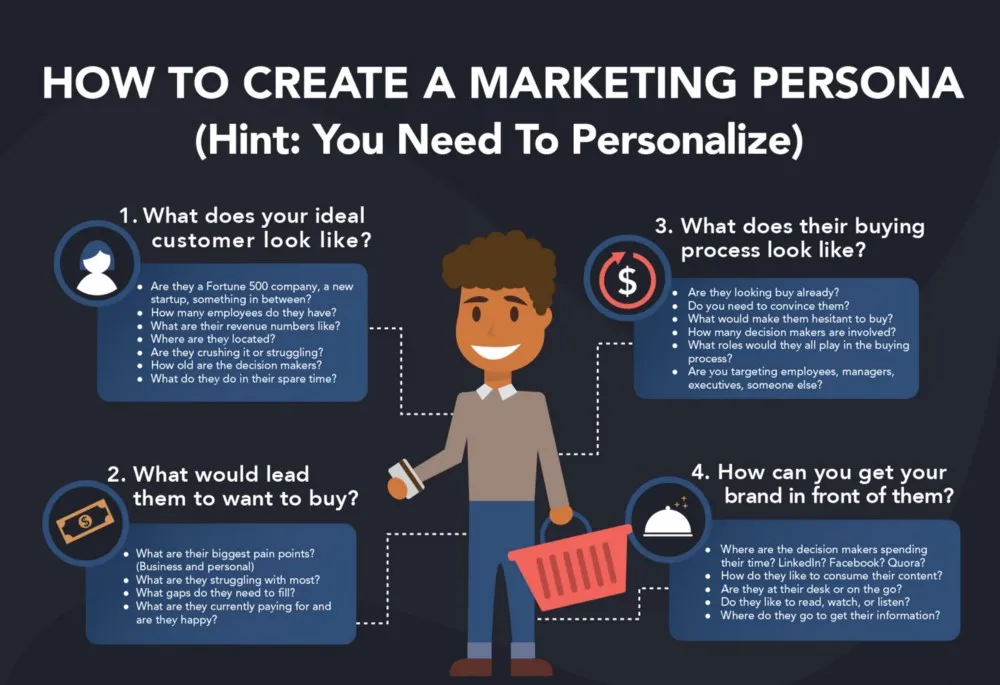
When it comes to lead generation for marketing agencies, especially in the SaaS sector, the creation of a marketing persona is pivotal.
But what exactly is a marketing persona?
It's a partly imaginative portrayal of your perfect client, derived from market analysis and factual information about your current clientele.
Crafting a detailed persona involves understanding various aspects such as demographics, behavior patterns, motivations, and goals. It's not just about who your customers are, but also why they choose your SaaS product.
The Role of Market Research in Generating Qualified Leads

Market research is the backbone of creating an accurate and effective marketing persona.
It involves gathering and analyzing information about your target audience’s preferences, needs, and challenges. For a SaaS company, this means diving deep into understanding the pain points that drive potential customers to seek your software as a solution.
Understanding Target Audience: The first step in market research is identifying who your target audience is. This can include details like industry, company size, and job roles. For instance, If your SaaS caters to email marketing, your focus might be on marketing qualified leads who are looking for efficiency and automation.
Gathering Data: Use tools like surveys, interviews, and analysis of online behavior to gather data. This can be enhanced with SEO strategies to understand what potential customers are searching for online.
Analyzing Competitors: Look at your competitors to understand their customer base. Tools like Ahrefs can be invaluable in this process, providing insights into competitors’ SEO strategies and the keywords they're targeting.
Developing the Persona: Combine this data to create your marketing persona. For example, “Marketing Mike”, a mid-level marketing manager in a medium-sized B2B company, struggling to manage email campaigns efficiently.
Tailoring Strategies: Once you have your persona, tailor your lead generation strategies to address their specific needs and pain points. This could involve creating targeted content marketing strategies, like blog posts and infographics, that provide solutions to Mike’s challenges.
Lead Nurturing: With a clear persona, lead nurturing becomes more streamlined. For SaaS companies, this could mean offering free trials, creating email drip campaigns that provide valuable insights, or using retargeting campaigns to re-engage visitors who showed interest.
Conversion Tactics: Finally, use your persona to guide the development of conversion tactics. This could include optimizing landing pages to appeal to Mike’s needs, using social proof like case studies and testimonials, and employing lead scoring to prioritize high-potential leads.
Best Lead Generation Strategies for SaaS Businesses

Key Strategies for Generating Leads in SaaS Companies
1. Content Marketing: Key to SaaS Lead Generation

Content marketing is essential for SaaS businesses. It's more than writing blog posts; it's about creating content that answers the specific needs of your target audience.
For instance, producing articles by the sales team on saas lead generation or b2b saas lead generation can attract potential customers for companies. Integrating SEO with your content strategy is crucial. This means using keywords like lead generation strategies effectively, enhancing both the quality and searchability of your content.
2. Email Marketing: Keeping Leads Engaged

Email marketing is a critical component of lead generation for marketing agencies. For SaaS businesses, this means creating drip campaigns that nurture potential customers at each stage of the sales funnel.
Personalized emails that target your audience's needs can increase engagement and conversion rates.
To know more about Email Marketing, you can read our blog - B2B Email Marketing Examples: The Ultimate Guide for Your Business
3. Optimizing Landing Pages and Web Forms
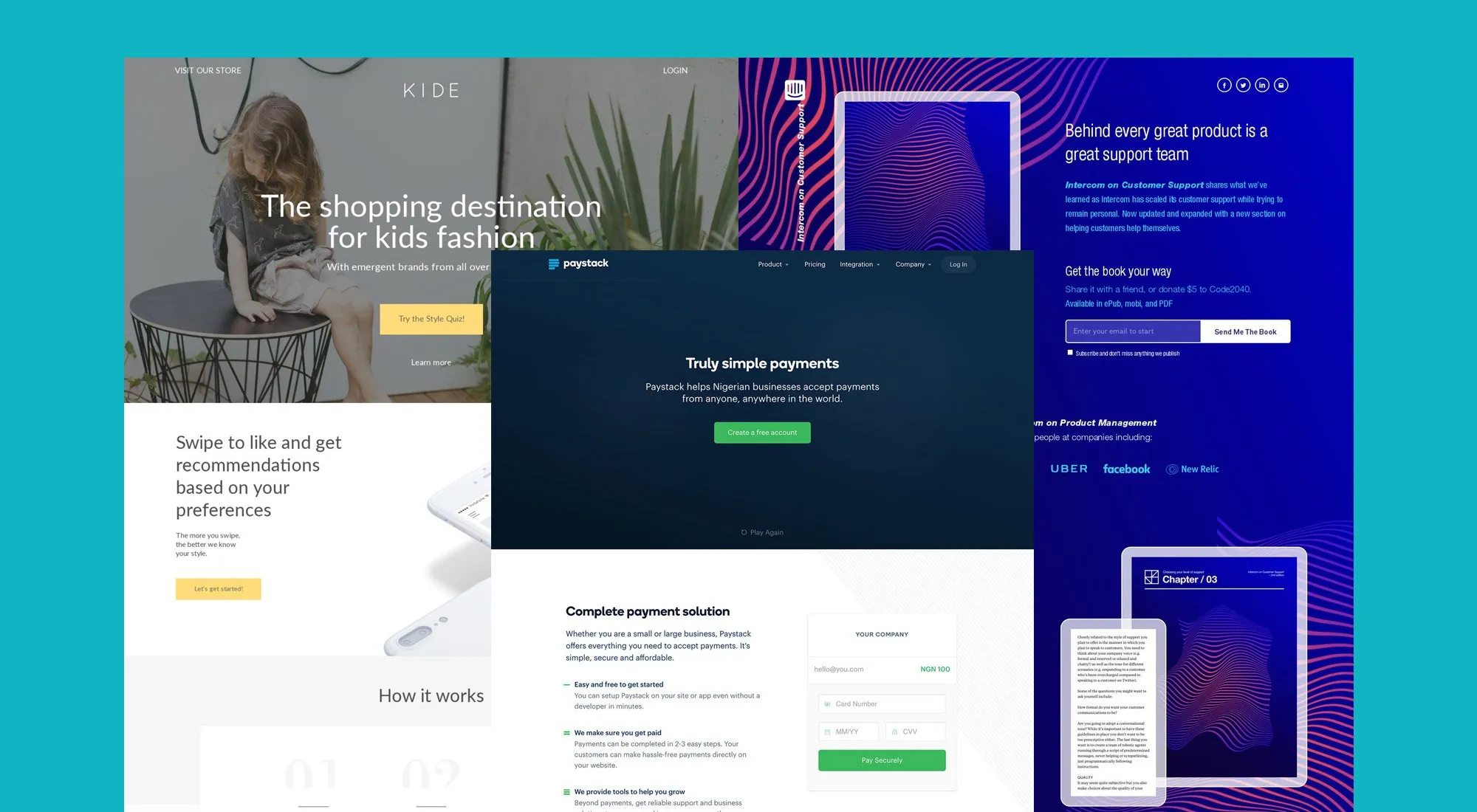
Landing pages and web forms are vital in saas lead generation efforts. They should be designed for capturing leads effectively and optimized for lead qualification.
Whether it's a landing page for a free trial or a webinar sign-up, these tools are gateways for converting visitors into leads.
4. Social Proof and Customer Testimonials

Building trust is crucial in the SaaS industry. Including social proof and customer testimonials in your lead generation tactics can significantly influence potential customers.
Showcasing success stories in saas lead generation or positive feedback from existing customers adds credibility and can motivate potential customers to engage with your product.
5. Search Engine Optimization: Increasing Visibility
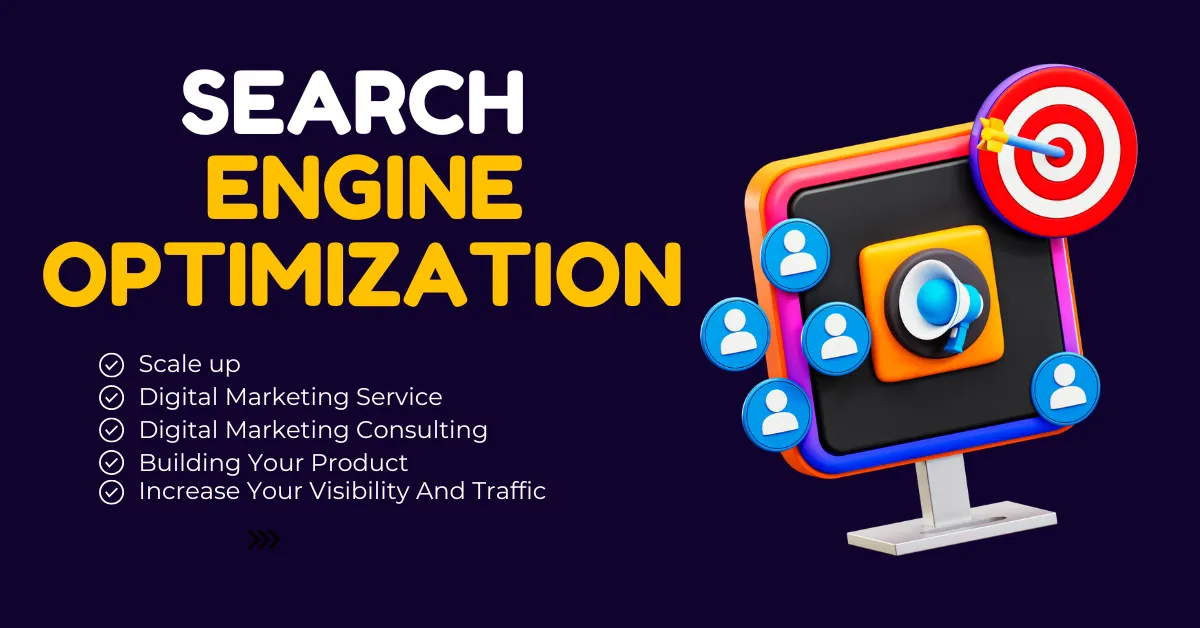
Search engine optimization is a must for SaaS businesses. It's not just about ranking higher but being visible when potential customers search for saas lead generation strategies or how to generate high quality leads. Online visibility is key in attracting and converting leads.
6. Leveraging Marketing Automation

Marketing automation is a game-changer in lead generation efforts. By automating repetitive tasks, SaaS companies can focus on creating more leads and nurturing them effectively.
Implementing marketing automation tools helps streamline the lead generation process, from capturing leads to nurturing and converting them into paying customers.
7. Effective Use of Sales Funnels
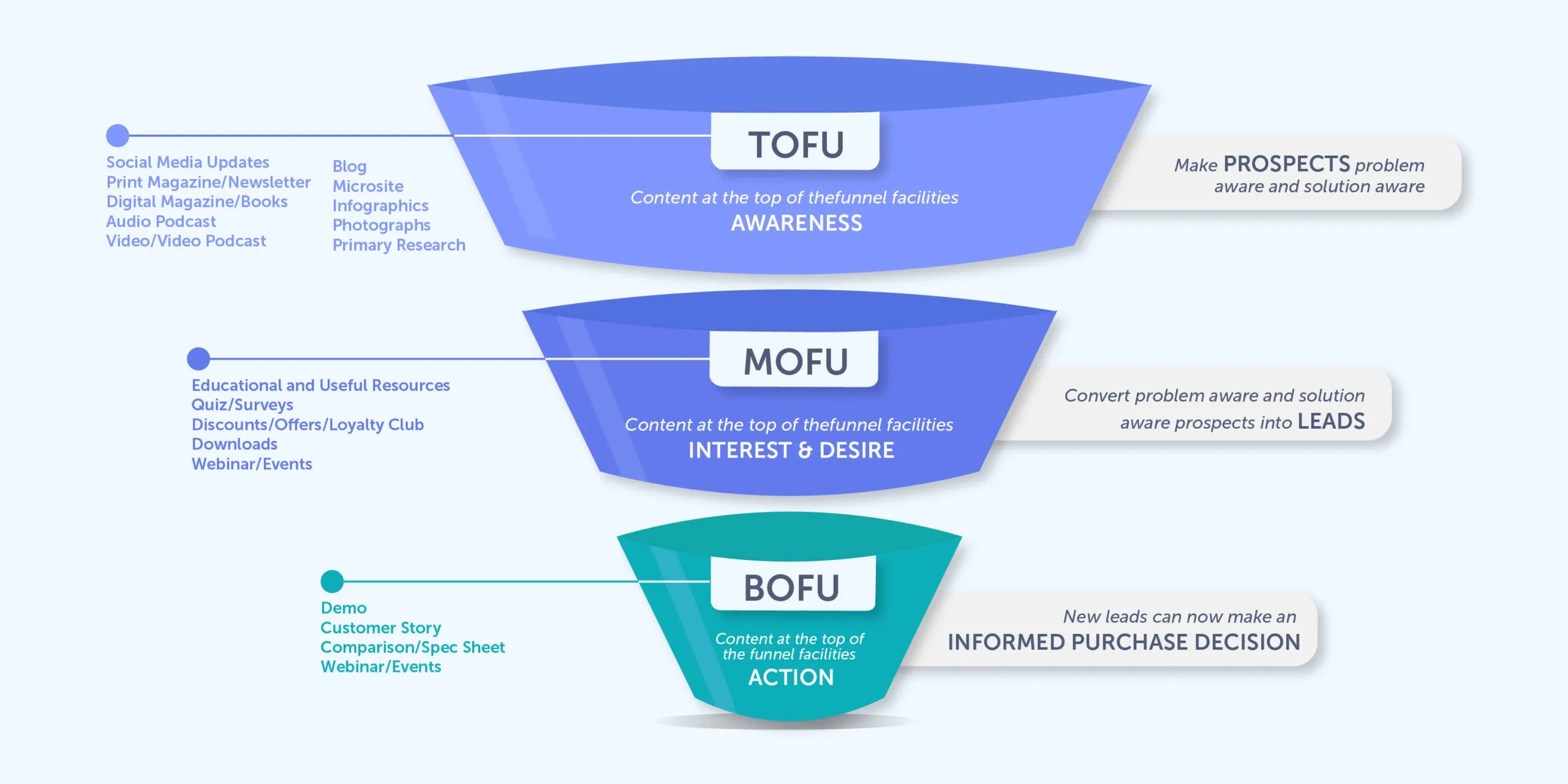
Developing a well-structured sales funnel is crucial for converting leads into sales qualified leads and ultimately into paying customers. Each stage of the funnel should be carefully crafted, from attracting potential customers to closing sales.
Understanding the journey of your target customers through the funnel can lead to more effective marketing and sales strategies.
To understand Sales Funnel more, you can read our blog - The Meaning of Sales Funnel: Defining and Managing Your Path to Customers
8. Develop Strong Call-to-Actions (CTAs)

Effective CTAs on your website, in your content, and across your social media platforms can encourage potential leads to take action, such as signing up for a free trial, downloading a whitepaper, or scheduling a demo.
9. Offer Free Trials or Demos
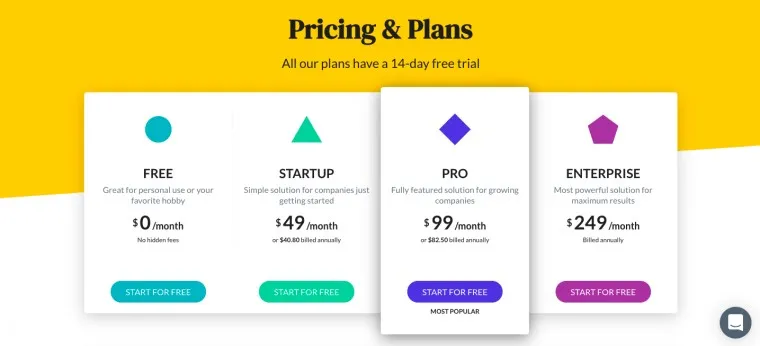
Offering free trials or product demos can be a compelling way to attract leads. It allows potential customers to experience your product firsthand, increasing the likelihood of conversion.
10. Offering Bespoke Consultations

Provide personalized consultation services as a lead magnet. This can attract potential clients who are looking for customized solutions, thereby generating high-quality leads.
Promote this service through your digital channels, ensuring an easy scheduling process for prospects. In these sessions, prioritize offering actionable insights rather than direct sales pitches. Follow up after each consultation with a personalized summary and additional resources, reinforcing the value provided.
Continuously gather feedback to improve the service and gain insights for broader marketing strategies. This method not only showcases your expertise but also builds trust with potential clients by demonstrating a commitment to understanding and solving their unique challenges, thereby enhancing the likelihood of converting them into customers.
Effective B2B SaaS Lead Generation Tactics
1. Streamline the SaaS Lead Generation Process
A key aspect for SaaS companies is to refine their lead generation process. This involves optimizing the sales funnel for better efficiency, from initial lead capture through web forms to converting leads into paying customers. Understanding each phase of the funnel and applying specific tactics for each is vital.
2. Utilize Lead Scoring Techniques
Lead scoring is a valuable yet often overlooked strategy in SaaS. Assigning scores to leads based on their interactions allows you to prioritize those with higher conversion potential. This method ensures your sales team focuses on leads that are more likely to become valuable customers.
3. Enhance Email Marketing Strategies
Email marketing is essential in lead generation. For SaaS companies, this includes developing targeted drip campaigns. These campaigns should deliver content that aligns with the interests and needs of your audience, keeping them engaged and moving them through the buyer's journey.
4. Effectively Use CRM Systems
CRM systems are fundamental for managing customer interactions in the SaaS industry. An effective CRM strategy can improve relationships and increase retention, directly impacting sales growth.
5. Diversify Content Marketing
Expanding content marketing beyond traditional blogs can greatly benefit lead generation. Incorporate various formats like detailed infographics on your SaaS product’s features and case studies showcasing real-world applications to engage your audience more effectively.
6. Capitalize on Social Proof
Social proof, including customer testimonials and reviews, can significantly influence B2B clients. Demonstrating how other businesses have benefited from your SaaS solution enhances credibility and trust, key components in successful lead generation.
7. Use Advanced SEO Strategies
In SaaS, SEO is more than just optimizing for search engines. It's about aligning your online presence with the search behaviors of your target audience, ensuring your solutions are easily found and resonate with potential customers' needs.
8. Integrate Marketing Automation
Incorporating marketing automation tools can streamline lead generation. These tools assist in everything from lead capture to nurturing, using personalized content and behavior-based segmentation for more effective marketing efforts.
Integrate Sales and Marketing Efforts for Enhanced Lead Generation

For SaaS businesses, synchronizing sales and marketing strategies is vital for generating qualified leads. A cohesive approach ensures that both teams contribute effectively to the lead generation process.
Collaborate Goals and Plans: Develop unified goals where sales and marketing teams collaborate to create a consistent messaging strategy. This alignment helps in targeting the right audience and enhances the efficiency of the lead generation process.
Effective CRM Implementation: Utilizing customer relationship management (CRM) tools is crucial for tracking and managing leads. A well-implemented CRM system aids in lead qualification and ensures that the sales team receives well-nurtured leads ready for conversion.
Ongoing Feedback and Adjustment: Regular feedback between sales and marketing teams is essential. This feedback loop allows for continuous refinement of lead generation strategies, ensuring they align with the needs and behaviors of the target market.
Target Market Analysis: Conduct in-depth research to understand your target market. Use this data to align sales and marketing strategies more closely with customer needs and preferences.
Lead Generation Through Gamification for SaaS Companies
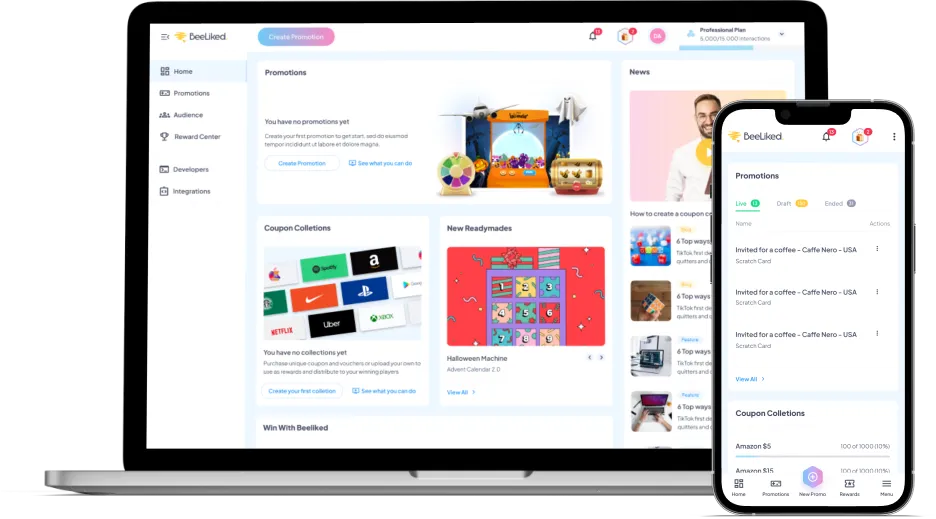
Gamification offers a unique and engaging approach to lead generation for SaaS companies. By integrating game-like elements, businesses can attract and retain the attention of potential leads in a more interactive way.
Engaging Challenges with Incentives: Create interactive and fun challenges related to your SaaS product. Offer incentives for participation, turning engagement into a pathway for lead generation.
Social Proof in Gamification: Incorporate social proof, such as user testimonials or leaderboard rankings, into your gamification strategies. This can boost credibility and encourage more people to participate, generating new leads.
Enhancing the User Experience: Use gamification to make learning about your product enjoyable and memorable. A positive user experience can lead to better brand recall and a higher chance of converting leads into customers.
Gamified Lead Qualification: Introduce gamified elements in the lead qualification process. This can make the process more engaging for potential leads, increasing their willingness to provide valuable information.
Essential Tools for B2B SaaS Lead Generation
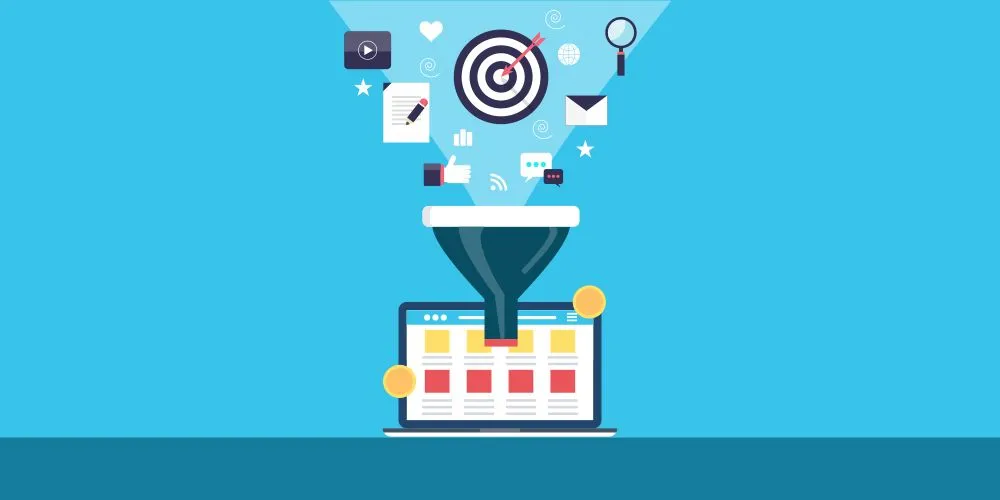
For B2B SaaS businesses, having the right tools is crucial for effective lead generation. These tools not only help in capturing potential leads but also play a significant role in nurturing and converting them into loyal customers. Here's an overview of essential tools that are integral to any successful B2B SaaS lead generation strategy:
1. Customer Relationship Management (CRM) Systems:
A robust CRM system is the backbone of lead generation and management. It allows SaaS companies to track interactions with potential and existing customers, manage lead data, and streamline the sales process. Effective CRM tools offer functionalities like lead scoring and segmentation, which are vital in prioritizing leads based on their likelihood to convert.
2. SEO and Analytics Tools:
Search engine optimization (SEO) tools like SEMrush or Ahrefs are critical for improving online visibility. They help identify key search terms potential customers use, allowing SaaS companies to optimize their content and website accordingly. Additionally, analytics tools such as Google Analytics provide insights into website traffic and user behavior, aiding in refining lead generation strategies.
3. Content Management Systems (CMS):
A CMS like WordPress is essential for creating and managing digital content. For SaaS companies, a CMS is crucial in maintaining an up-to-date and informative blog, which is a key component in attracting leads through valuable and relevant content.
4. Social Media Management Tools:
Platforms such as Hootsuite or Buffer enable SaaS companies to manage their social media presence effectively. These tools allow for scheduling posts, engaging with followers, and analyzing social media performance, all of which are important for building brand awareness and generating leads.
5. Lead Capture and Landing Page Tools:
Tools like Leadpages or Unbounce assist in creating optimized landing pages that capture lead information effectively. They provide templates and A/B testing features to create high-converting landing pages tailored to different target audiences or marketing campaigns.
6. Webinar and Online Meeting Software:
Given the digital nature of SaaS products, webinar tools like Zoom or GoToWebinar are effective in generating and nurturing leads. They allow companies to host online product demos, Q&A sessions, and educational webinars, engaging directly with potential customers.
7. Chatbots and Customer Support Tools:
Chatbots and tools like Intercom provide instant customer support and interaction. They are effective in engaging website visitors, answering queries, and capturing lead information in real-time.
8. Account-Based Marketing (ABM) Platforms:
ABM platforms like Demandbase or Terminus specialize in targeting key accounts. They enable SaaS companies to focus their marketing efforts on high-value companies, delivering personalized marketing campaigns directly to decision-makers in those organizations. This strategy is particularly effective in the B2B SaaS space where specific targeting can lead to higher conversion rates.
9. Online Advertising Platforms:
Online advertising platforms such as Google Ads and LinkedIn Ads are crucial for driving targeted traffic to your website or landing pages. They allow for precise targeting based on demographics, job titles, industries, and online behaviors, making them invaluable for B2B lead generation.
10. Referral Program Software:
Implementing a referral program can be a powerful way to generate new leads. Tools like Ambassador or ReferralCandy help automate the referral process, making it easy for current customers or partners to refer new clients and get rewarded, thereby leveraging existing relationships to generate new leads.
11. Video Marketing Tools:
In the digital age, video marketing has become increasingly important. Tools like Wistia or Vidyard help SaaS companies create and share engaging video content. Videos can be used for product demos, client testimonials, or educational content, providing a dynamic way to engage and convert leads.
12. AI-Powered Insights and Analytics Tools:
AI-driven tools like Crayon or PathFactory provide advanced insights and analytics. They track competitor activities, market trends, and customer engagement, offering SaaS businesses valuable data to refine their lead generation and marketing strategies.
How to Optimize Lead Generation Efforts for High-Quality Leads

For SaaS businesses, especially in the B2B sector, the quality of leads is often more important than quantity. This section focuses on strategies to optimize lead generation processes, ensuring the acquisition of high-quality leads that are more likely to convert.
1. Implement Advanced Lead Scoring Techniques:
Adopt sophisticated lead scoring methods to evaluate and prioritize leads more effectively. Use criteria like engagement level, company size, or specific interactions with your content to score leads. This approach helps in focusing efforts on prospects with the highest conversion potential.
2. Strengthen Lead Generation Tactics:
Revamp your lead generation tactics by incorporating advanced SEO strategies and customer relationship management tools. These tools can significantly enhance your online visibility and improve your ability to capture and manage leads effectively.
3. Utilize Account-Based Marketing (ABM) for Targeted Lead Capture:
ABM focuses on targeting specific high-value accounts rather than casting a wide net. Employ ABM platforms to deliver personalized marketing campaigns to these targeted accounts, increasing the likelihood of attracting quality leads.
4. Explore the Potential of AI and Machine Learning:
Incorporate AI and machine learning technologies to analyze lead data and predict buying behavior. These technologies can provide valuable insights, allowing you to tailor your marketing strategies to attract leads that are more likely to convert.
5. Optimize Web Forms for Higher Lead Capture Efficiency:
Design web forms to maximize lead capture without deterring potential customers. This involves balancing the amount of information requested with user convenience. A/B testing can be used to determine the most effective form designs.
6. Enhance Customer Engagement with Interactive Content:
Use interactive content, such as quizzes or calculators, to engage potential leads. This type of content can be both informative and entertaining, encouraging prospects to spend more time interacting with your brand.
7. Leverage Marketing Automation for Efficient Lead Nurturing:
Implement marketing automation platforms to nurture leads effectively. Automated workflows can ensure timely and relevant communication with prospects, guiding them through the sales funnel.
Common Mistakes to Avoid While Generating Leads in SaaS

In the SaaS industry, lead generation is a critical process, but it's easy to fall into certain pitfalls. Being aware of these common mistakes can help streamline your lead generation efforts and increase their effectiveness.
1. Neglecting a Targeted Approach:
One of the biggest mistakes is not defining or understanding your target audience. A one-size-fits-all approach can lead to low-quality leads. It's essential to tailor your strategies to attract the specific demographic that needs your SaaS solution.
2. Overlooking the Importance of Content Quality:
Focusing on quantity over quality in content marketing is a misstep. Content should be valuable, informative, and tailored to your audience's interests and needs. High-quality content establishes authority and attracts more engaged leads.
3. Ignoring SEO Optimization:
Failing to optimize your content and website for search engines can significantly reduce your online visibility. Proper SEO practices ensure that your SaaS product is discoverable by potential leads actively searching for solutions in your niche.
4. Underestimating the Power of Email Marketing:
Many SaaS businesses underutilize email marketing or execute it poorly. Effective email marketing involves personalized, targeted messages, not just general newsletters. It's a powerful tool for nurturing leads through the sales funnel.
5. Inadequate Lead Nurturing and Follow-Up:
Generating leads is just the first step; failing to nurture them properly can lead to missed opportunities. Regular follow-ups and engagement are key to converting leads into customers.
6. Not Utilizing Analytics and Feedback:
Not tracking or analyzing the performance of your lead generation strategies can lead to repeated mistakes. Use analytics tools to understand what works and what doesn’t, and adapt your strategies accordingly.
7. Overlooking Customer Relationship Management (CRM):
Not effectively using CRM tools can result in disorganized lead management. A good CRM system helps track interactions with potential customers and manage leads more efficiently.
8. Lack of Clear and Compelling Call-to-Action (CTA):
Having weak or unclear CTAs in your marketing materials can lead to low conversion rates. CTAs should be clear, compelling, and guide potential leads towards the next step in the sales funnel.
9. Ignoring Customer Feedback and Testimonials:
Not leveraging customer feedback and testimonials is a missed opportunity. Positive feedback builds trust and can be a powerful tool in attracting new leads.
10. Not Aligning Sales and Marketing Teams:
A lack of coordination between sales and marketing teams can lead to inconsistent messaging and lost opportunities. Ensuring these teams work together towards common goals is crucial for effective lead generation.
The Future Landscape of SaaS Business for Lead Generation

The future landscape of SaaS business for lead generation is evolving rapidly, driven by technological advancements and changing market dynamics. Here's what to expect:
1. Increased Emphasis on AI and Automation:
Artificial Intelligence and automation technologies will play a more significant role in lead generation. These technologies can analyze vast amounts of data to identify patterns and insights, enabling more targeted and personalized marketing strategies.
2. Shift Towards Account-Based Marketing (ABM):
ABM will become more prevalent in the SaaS industry. This strategy focuses on targeting key accounts rather than broader markets, leading to more efficient use of resources and higher conversion rates.
3. Enhanced Use of Predictive Analytics:
SaaS companies will increasingly use predictive analytics to forecast future market trends and customer behaviors. This will allow for more proactive and strategic lead generation efforts.
4. Integration of Advanced CRM Systems:
CRM systems will become more sophisticated, offering deeper insights into customer preferences and behaviors. This will enable SaaS businesses to tailor their lead generation strategies more effectively.
5. Growth of Content Personalization:
Personalized content will become crucial in attracting and retaining leads. Customizing content based on user interests and behaviors will be key in engaging potential customers.
6. Expansion of Omnichannel Marketing:
Omnichannel marketing strategies will be essential. SaaS companies will need to integrate their marketing efforts across various channels to provide a seamless customer experience.
7. Increased Focus on User Experience:
The user experience will play a more significant role in lead generation. A positive user experience can boost brand reputation and customer loyalty, leading to more leads and conversions.
8. More Strategic Social Media Use:
Social media will be used more strategically for lead generation. This includes leveraging social media analytics to understand audience preferences and creating more engaging and targeted content.
9. Privacy and Data Protection Becoming Central:
With increasing concerns over data privacy, SaaS companies will need to prioritize secure and ethical data practices in their lead generation strategies.
10. Rise of Interactive and Engaging Formats:
Interactive formats like webinars, live demos, and interactive content will become more popular in engaging leads and providing them with value.


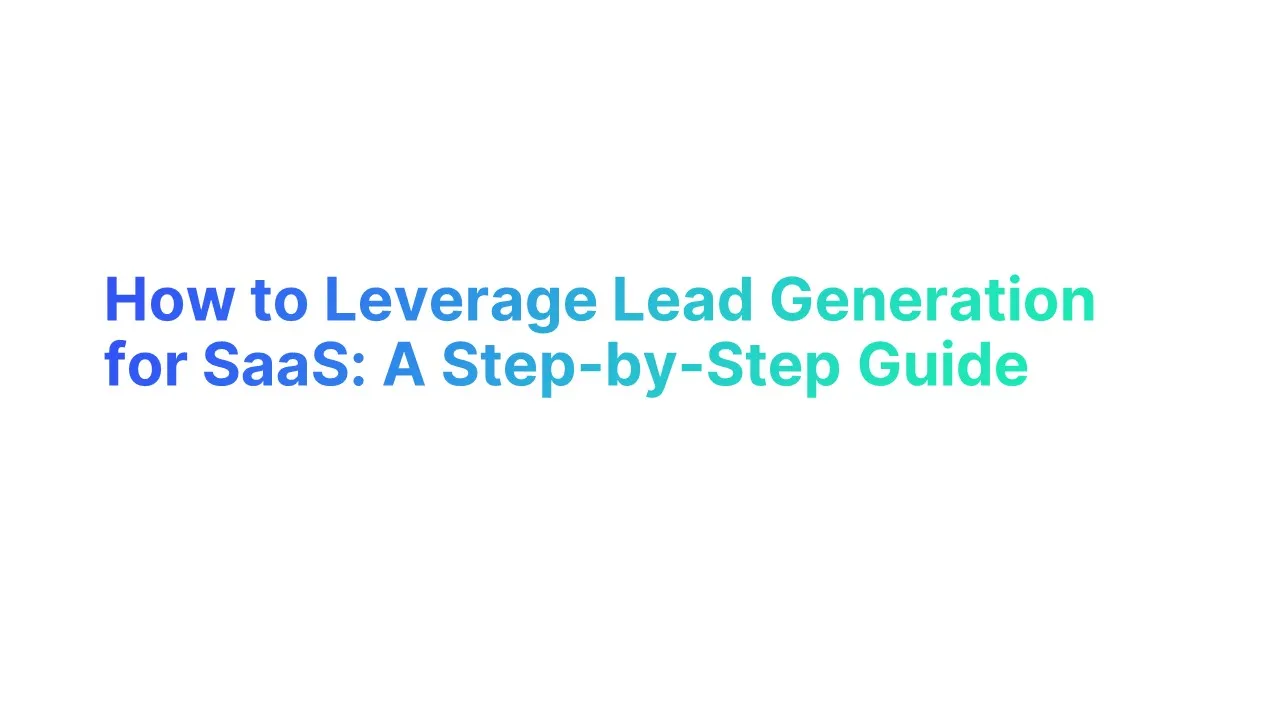



.jpg)

.jpg)
